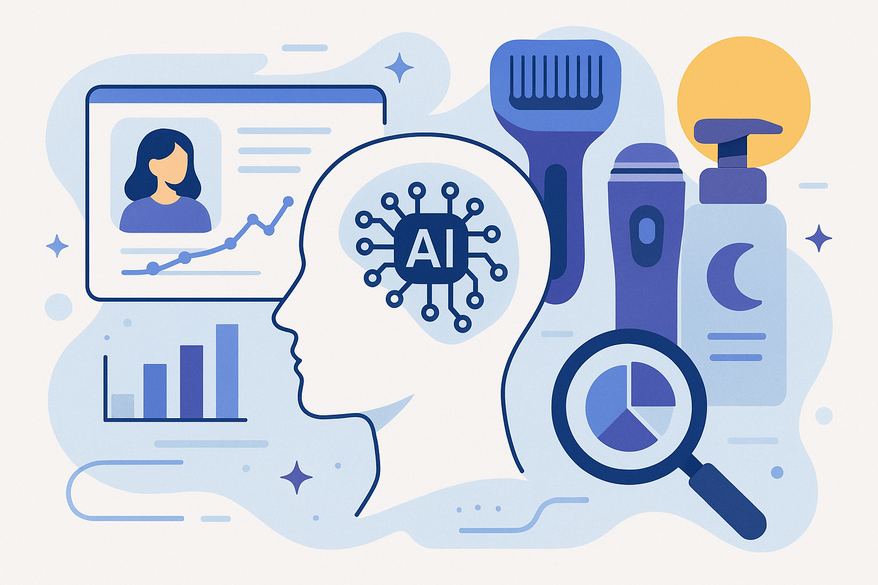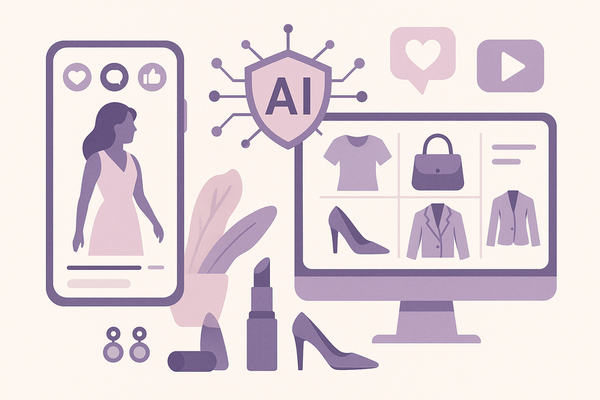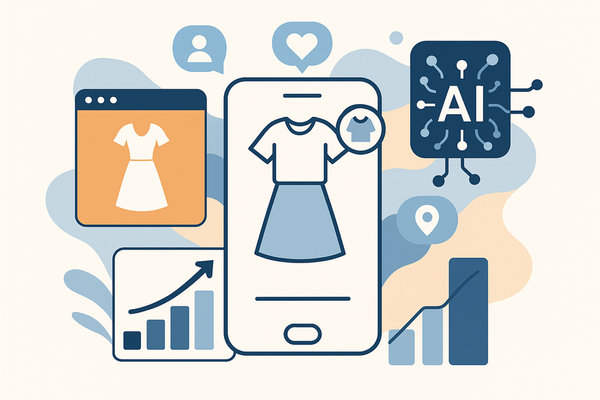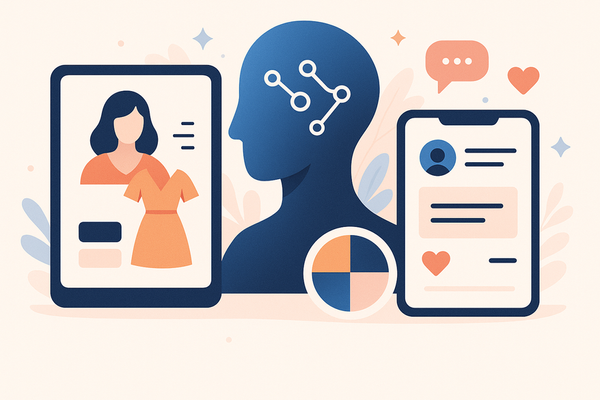Ultimate Guide to AI Self Grooming Tips: Personalized, Data-Driven Routines for the Digital Age
Discover AI self grooming tips for tailored routines that enhance appearance and wellness using smart tools and data-driven insights.

Estimated reading time: 10 minutes
Key Takeaways
- AI-powered mirrors, apps, and wearables deliver highly personalized grooming and wellness routines.
- Data-driven insights optimize skin, hair, and overall health while saving time and reducing waste.
- Automated suggestions remove guesswork and improve outcomes versus one-size-fits-all approaches.
- Privacy, data security, and professional guidance remain essential considerations.
- Future innovations include ultra-personalization, multimodal diagnostics, on-demand formulations, and sustainable practices.
Table of Contents
- Introduction
- Understanding AI Self Grooming – Key Concepts and Trends
- Benefits of Using AI for Self Grooming – Why Data Matters
- Practical AI Self Grooming Tips – Actionable Strategies
- Tools and Technologies for AI Self Grooming – Top Platforms
- Potential Challenges and Considerations for AI Self Grooming
- Future Trends in AI and Grooming – What’s Next
- Conclusion
- FAQ
Introduction
AI self grooming tips are changing the way we care for our skin, hair, and health. AI-powered tools—apps, mirrors, and wearables—build tailored routines that boost appearance and wellness.
AI self grooming leverages smart devices to optimize personal appearance, self-care, and wellness routines. AI can scan your face, track sleep, and suggest the right serum or workout, blending data, machine learning, and computer vision for step-by-step advice. Read more in the NYSCC blog on AI innovation in beauty and personal care.
Self grooming is critical in the digital age. Online profiles and video calls put us in the spotlight, and strong digital impressions build trust in professional and social settings. Smart grooming tools save time, reduce waste, and enhance results by linking to health data from wearables. Discover the latest in the Global Wellness Institute blog on AI trends for 2025.
Explore top AI self-care apps in our Ultimate Guide to AI Self-Improvement Apps.
In this guide, we will:
- Explain what AI self grooming means
- Highlight key benefits of data-driven grooming
- Offer practical tips for immediate implementation
- List top tools and how to use them
- Discuss challenges like privacy and accuracy
- Explore future trends in smart grooming
- Answer common questions
Section 1: Understanding AI Self Grooming – Key Concepts and Trends
Definition of AI Self Grooming
AI self grooming means using smart devices and software—such as AI-powered mirrors, mobile apps, and wearable sensors—to analyze your skin, hair, and health. The system then recommends or automates grooming steps, learning your habits over time. See insights from the Global Wellness Institute and the NYSCC blog on AI in beauty and personal care.
How It Fits into Daily Routines
- Skin Analysis & Product Picks: Smart mirrors scan your face for dryness, oil, and spots, then suggest cleansers, serums, or sunscreen.
- Wearable Health Tracking: Fitness bands and smart rings measure sleep quality, heart rate, and hydration, feeding data into your grooming plan.
- AI Chat Wellness Advisors: Chatbots offer real-time tips on stress, diet, or skincare, from midday walks to clay masks.
- Computer Vision Tools: Apps use your camera to detect skin changes early and track progress over weeks.
Trends & Technologies Shaping AI Self Grooming
• AI-Driven Smart Fitness Gear: Bikes and treadmills adapt workouts based on stress levels.
• Skincare Analyzers with Computer Vision: Cameras detect redness, texture, and UV damage.
• Conversational AI Wellness Coaches: Voice assistants guide your self-care rituals.
• Multi-Sensor Devices: Rings and mirrors with pH, temperature, and light sensors for full-body diagnostics.
• AI-Formulated Beauty Products: Labs use your data to mix serums or creams on demand, as detailed by the Global Wellness Institute and NYSCC.
Section 2: Benefits of Using AI for Self Grooming – Why Data Matters
1. Personalization
• AI tailors each step to your unique data.
• It reads skin moisture, sleep quality, and activity levels.
• You avoid generic, one-size-fits-all routines.
• Example: A smart mirror detects dryness and ups your serum dose, as noted by the Global Wellness Institute and NYSCC.
2. Time-Saving
• Automated scans and personalized suggestions remove trial and error.
• You skip endless searching for the right moisturizer or haircut tutorial.
3. Informed Choices
• AI mines large datasets, scientific studies, and clinical trials.
• Your product match is backed by real research, not just marketing hype.
4. Enhanced Outcomes
• Feedback loops let you see what works each week.
• Routines adjust dynamically as your skin or fitness levels change.
Section 3: Practical AI Self Grooming Tips – Actionable Strategies
Actionable Tips
• Use a smart mirror daily for skin scans and product recommendations.
• Wear an AI-powered fitness band or smart ring to track sleep, heart rate, and hydration.
• Try a skincare app that logs your skin reactions and tweaks your routine—see targeted AI-driven skincare routines.
• Leverage AI razors or smart toothbrushes with sensors that guide your technique.
Step-by-Step Implementation
1. Identify Goals: Acne reduction, anti-aging, overall wellness, or styling.
2. Research Tools: Choose apps and devices that match your goals, reading reviews and privacy policies.
3. Calibration: Upload photos, enter health metrics, and set your preferences.
4. Daily Routine: Follow AI-generated to-do lists—morning serum, midday stretch, evening mask.
5. Review Progress: Check weekly reports and adjust inputs or preferences.
Best Practices
• Keep apps and device firmware updated for optimal accuracy.
• Blend AI guidance with insights from dermatologists and grooming professionals.
• Regularly review and update privacy settings to secure your personal data.
For a seamless all-in-one analysis, tools like Maxx Report offer AI-powered insights across grooming routines, skin and hair assessments, and personal metrics.
Section 4: Tools and Technologies for AI Self Grooming – Top Platforms
Withings Smart Mirror
• Features: Full-body composition scans, skin analysis, UV damage alerts.
• Benefit: Early issue detection and hyper-personalized morning routines.
• Learn more at the Global Wellness Institute blog on AI trends.
JuggernautAI
• Features: Adaptive fitness and grooming plans with progress dashboards.
• Benefit: Programs that evolve with your biometrics.
• See details at the Global Wellness Institute.
Whoop Coach
• Features: Conversational AI coach, real-time biometric feedback, recovery scores.
• Benefit: Live wellness recommendations tailored to your daily stats.
• Source insights via the Global Wellness Institute blog.
AI Skincare Apps (SkinVision, Revieve)
• Features: Computer vision skin checks, product matching, routine logging.
• Benefit: Custom regimens and continuous monitoring.
• Learn more from the NYSCC blog on AI in beauty and personal care.
Section 5: Potential Challenges and Considerations for AI Self Grooming
Privacy & Data Security Concerns
• AI tools collect photos, health metrics, and personal habits.
• Risk: Data breaches can expose sensitive information.
• Advice: Review privacy policies, enable encryption, and choose brands with transparent data handling. See the NYSCC blog on data security.
Technical Limitations & Inaccuracies
• AI relies on training data; limited or biased datasets can cause errors.
• Note: AI can flag issues but cannot diagnose medical conditions.
Balancing AI & Professional Advice
• Use AI for daily upkeep and habit building.
• Consult dermatologists or grooming experts for complex issues or treatments.
Section 6: Future Trends in AI and Grooming – What’s Next
- Deeper Personalization
Merging genomics, microbiome, and lifestyle data for ultra-customized routines, as highlighted by the Global Wellness Institute and NYSCC. - Multimodal Home Diagnostics
Next-gen mirrors and wearables will add pH, hydration, and temperature sensors for complete health scans (GWI blog). - AI-Powered Formulation
On-demand labs will mix creams and serums based on live user data (NYSCC insights). - Sustainability & Eco-Optimization
AI will recommend greener products and reduce waste through refillable cartridges and smart dosing (NYSCC blog).
Conclusion
AI self grooming tips use smart technology to tailor your grooming and wellness routines. We covered how AI tools—mirrors, wearables, and chatbots—work together to deliver personalization, time savings, data-backed choices, and improved outcomes. You now have practical steps, top platform recommendations, and best practices, along with an understanding of privacy challenges and the need for professional balance. As we look ahead, expect even deeper customization, comprehensive diagnostics, and sustainable solutions.
Data-driven self-care offers more efficient, effective, and eco-friendly routines. Try a smart mirror or AI-powered app today, and share your experiences to help shape the future of grooming.
FAQ
Q: Is AI self grooming safe for sensitive skin?
A: AI can flag potential irritants and suggest gentle products, but always do a patch test and consult a dermatologist for severe sensitivities.
Q: How is my data used?
A: Most apps store data on secure servers, using photos and health metrics to refine models and improve recommendations. Review privacy policies, opt out of sharing where possible, and enable device encryption.
Q: Can AI replace a dermatologist?
A: No. AI offers guidance and early alerts, but for medical diagnoses or treatments, always consult a licensed dermatologist.





